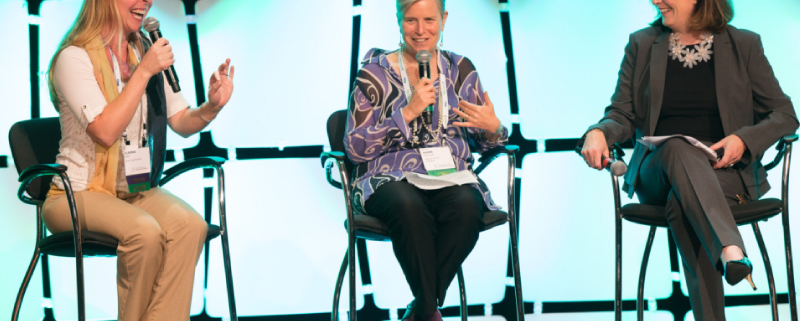New Ways to Think About Landscaping the Corporate Campus – A Conservation Conference Session Recap
Earlier this fall, WHC released the white paper, Reimagining the Corporate Campus: Creating Impactful Outcomes that Benefit Biodiversity and Communities, examining a range of project types that can be implemented on a corporate campus setting. Following up on this theme, a general session and workshop was added to the Conservation Conference 2016 program.
The general session opened the second day of the Conference, with WHC President Margaret O’Gorman facilitating an engaging conversation about native landscaping and the evolution of the corporate campus with Naomi Edelson, Senior Director, Wildlife Partnerships for the National Wildlife Federation (NWF), and Claudia West, landscape designer and author of Planting in a Post-Wild World: Designing Plant Communities for Resilient Landscapes.
The panel had a lively and often though-provoking discussion about the value of greening the corporate campus for both biodiversity and connecting people with nature. West often spoke of the psychological aspects of participating in these kinds of projects, reflecting on ideas such as how the simple act of putting a plant in the ground is a powerful enough to wake something deep inside us and connect us to the land.
Afterwards, attendees were invited to participate in a workshop with Edelson and West, which delved deeper into the concepts introduced during the general session. Edelson discussed the importance of using native species in more detail and introduced the audience to the NWF’s new online tool for selecting native plants, which was developed with the help of respected author, scientist, and native gardening proponent, and 2015 Conference keynote speaker, Dr. Doug Tallamy.
West covered the more technical side of native landscaping using material from her book, discussing planting strategies that use the ecology of native ecosystems to guide and inspire landscaping designs. She also provided participants with ideas to make native landscaping look more intentional, such as adding “orderly frames” around naturalistic plantings.
Both the general session and workshop were excellent reminders of what WHC members are increasingly aware of – that with increasing development of rural areas, the green spaces on corporate campuses can no longer serve just an aesthetic purpose; we must raise the bar for what we ask our landscapes to do, like providing habitat and managing stormwater.
You can still download our free white paper, Reimagining the Corporate Campus, to learn more about projects suited to the visual and functional aesthetics required of corporate campus settings.
